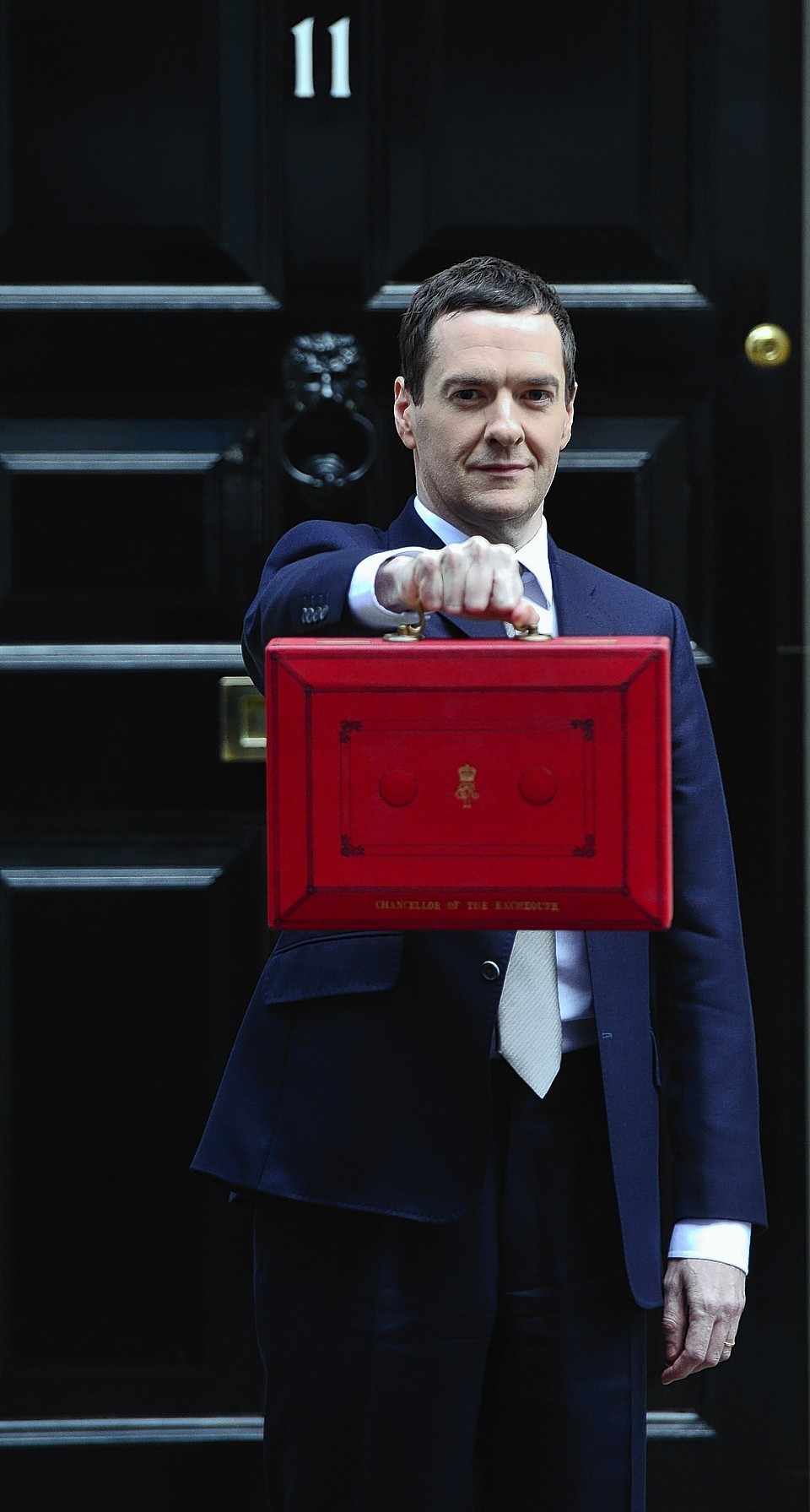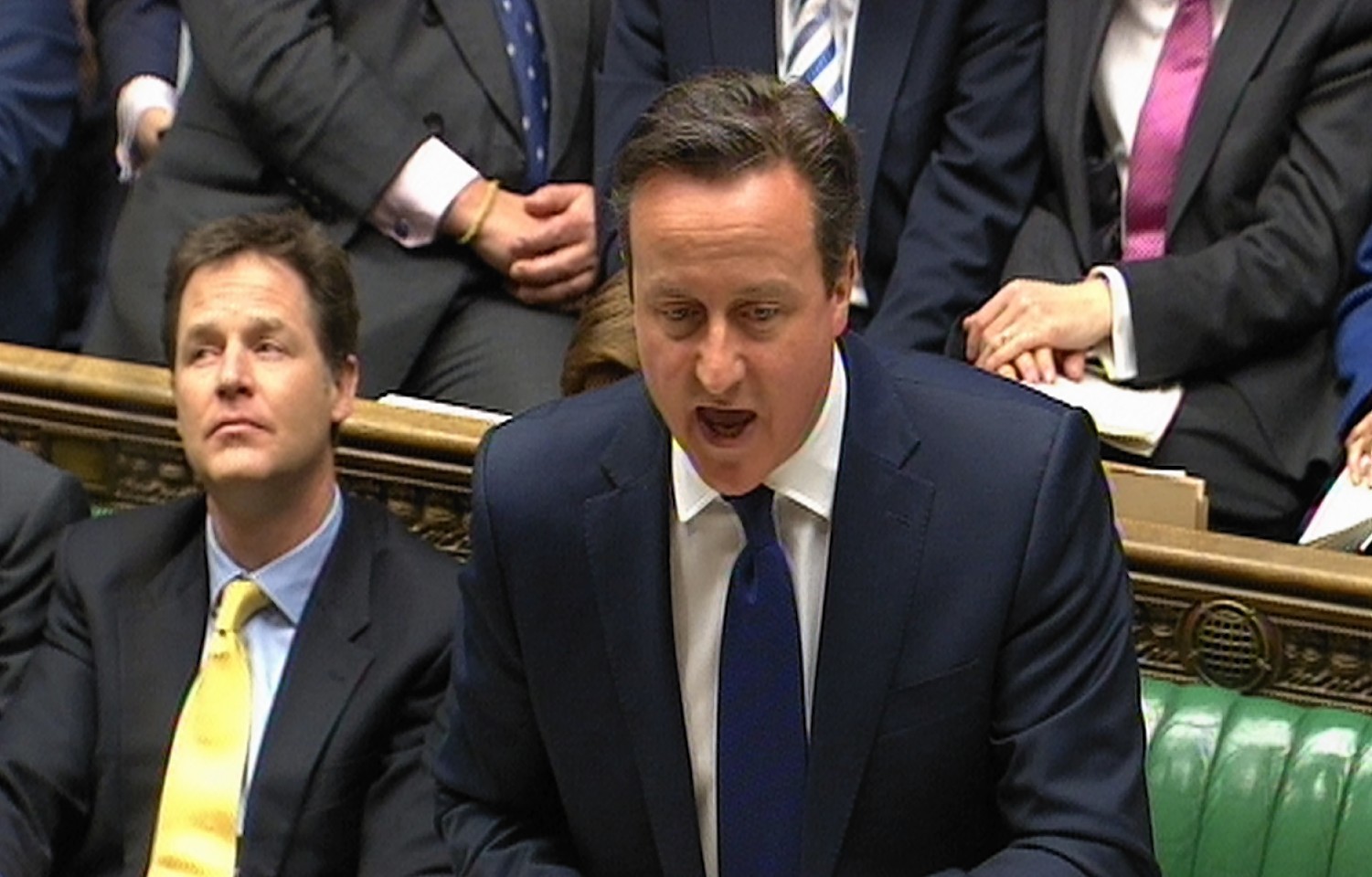Chancellor George Osborne is set to deliver his sixth, and arguably most important, Budget today.
We will be reporting all the latest news and reaction live.
The speech at 12.30pm is expected to kick-start the Tory election campaign with a series of crowd-pleasing measures and promises of more if his party is re-elected.
The Chancellor is expected to use an improvement in economic forecasts to hammer home the message that his “plan is working” – urging the public not to return to “chaos” under Labour.
Core issues for the north of Scotland:
– Aberdeen and Inverness to benefit from £3billion city deal
– Electricity bills to be slashed across north of Scotland
– Plans to refurbish armed forces lodge near Aviemore
– Oil and gas industry expects North Sea tax boost
Some £2 billion will be allocated to raising the personal tax allowance from £10,600 to £11,000, in line with the Conservative and Liberal Democrat aim for it to hit £12,500 by 2020.
He will also highlight plans to scrap annual tax returns and replace them with “digital tax accounts”, allowing millions of people to manage their affairs in real time using smart phones or computers.
One of the key economic indicators – the unemployment figures – have just been released:
Unemployment fell by 102,000 between November and January to 1.86 million. The number of people claiming jobseeker’s allowance last month fell by 31,000 to 791,200, said the Office for National Statistics.
Average earnings increased by 1.8% in the year to January, 0.3% down on the previous month.
The highest employment rate in our history is not a dry fact, it means more people with the security of a pay packet and a brighter future.
— David Cameron (@David_Cameron) March 18, 2015
Business Secretary Vince Cable has ruled out “spectacular giveaways” in the final Budget before the general election.
Mr Cable was speaking after an early-morning Cabinet meeting at which Conservative and Liberal Democrat ministers signed off a package expected to include a hike to £11,000 in the income tax personal allowance and moves to scrap unpopular annual tax returns.
Mr Cable stressed that Mr Osborne’s Budget has been agreed across both Conservative and Liberal Democrat sides of the coalition.
But he highlighted growing divergence between the two sides of the Government as he revealed the Lib Dems will set out “a separate budget trajectory” for the next parliament tomorrow, featuring higher tax rises than envisaged by their Tory partners.
Today we set out the next stage in a plan that is working, with a Budget that works for you. We will deliver a truly national recovery
— George Osborne (@George_Osborne) March 18, 2015
Asked what response the Cabinet gave to Mr Osborne’s Budget, Mr Cameron’s official spokesman told reporters: “I think you will see a very strong package of measures and that view was shared right around the table.
“There was a clear expression of views from around the table that it was a good and strong package.”
George Osborne and his ministers have left Downing Street and are heading towards Parliament.
Chancellor George Osborne and ministers arrive with the coveted red briefcase outside No 11 #Budget2015 pic.twitter.com/m7pSrjN7W8
— Jack Hardy (@JackHardy9) March 18, 2015
The Chancellor's convoy has arrived at New Palace Yard, Palace of Westminster. #Budget2015 pic.twitter.com/z9HwGnTcfF
— Tim Sculthorpe (@timsculthorpe) March 18, 2015
Some of the key players are taking their seats in the Commons ahead of PMQs which will run for about 30 minutes before the Budget delivery begins.
Robert Halfon the Chancellor’s PPS has arrived and Danny Alexander and other Treasury ministers are now taking their seat.
Eyes down for penultimate PMQs of the Parliament where we expect more very bitter and esoteric wrangling over debates.
Chancellor George Osborne glanced at the Peers’ gallery and grinned at someone just before David Cameron took to his feet.
Mr Osborne and Mr Cameron arrived to cheers – albeit modest ones, to avoid annoying speaker John Bercow too early.
Standing room only in the Commons as Ian Murray opens PMQs, claiming goverment is balancing books on the backs of the poorest.
Mr Osborne and Mr Alexander laugh during question on church roofs. Expect an announcement in the budget.
This PMQs shaping up to be little more than one long kitchen joke
— James Tapsfield (@JamesTapsfield) March 18, 2015
Even Cam seemed embarrassed by his gag about mili throwing "both kitchen sinks" at NHS
— James Tapsfield (@JamesTapsfield) March 18, 2015
David Cameron insisted he has delivered his promises on the NHS after Ed Miliband claimed no one would believe his election pledges because he has missed targets on A&E waiting times, cancer treatment and closures.
The Prime Minister defended the coalition’s record and said voters can believe Conservative manifesto pledges on the health service because “a strong economy can deliver a strong NHS”.
But Mr Miliband claimed Mr Cameron reneged on his pledge not to have a “top-down reorganisation” of the NHS, leading to the four-hour A&E waiting time target being missed for the whole of 2015 and cancer treatment targets being missed.
ONS stats in the circular flow of income. Interactive with links to datahttp://t.co/8uhqGYBqyg #Budget2015 pic.twitter.com/I2yuXnBBXk
— ONS (@ONS) March 18, 2015
Chancellor of the Exchequer George Osborne rose to deliver his sixth Budget at 12.32 pm.
Mr Osborne said that “Britain is walking tall again” with faster growth than any major economy.
The Budget makes new investments in manufacturing and science and the northern powerhouse for a truly national recovery. #Budget15
— HM Treasury (@hmtreasury) March 18, 2015
Osborne tells the house that Yorkshire alone created more jobs than the whole of France in the last year.
The Chancellor congratulates 15-year-old David Pearce, whose winning design was picked from more than 6,000 entries to be struck on to the new #1 coin in 2017.
Mr Osborne tells the Commons that the Government has met its 2010 target to end this Parliament with Britain’s national debt falling as a share of GDP.
“The sun is starting to shine and we are fixing the roof,”
Labour laugh at Osborne claim we are in this together, Chancellor says he can prove it with inequality, unemployment etc data
— Tim Sculthorpe (@timsculthorpe) March 18, 2015
Mr Osborne tells the house that decisions across this Parliament mean “the rich are making the biggest contribution to deficit reduction”.
He says the share of income tax paid by the top 1% of earners was projected to rise from 25% in 2010 to more than 27% this year, while the lower-paid 50% of earners pay a smaller proportion than under Labour.
Church roof fund to be trebled, Osborne says – "we're not the only people who want to fix the roof when the sun is shining!".
— Emily Beament (@EmilyBeament) March 18, 2015

